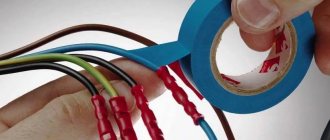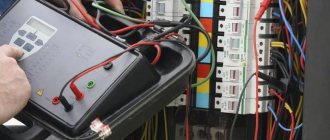What is electrical injury and why does it happen? What to do if a child gets an electric shock? Electrical safety for children.
What would we do without electricity? We feel uncomfortable if it is turned off in the house even for an hour, and work completely stops. Modern lighting and electrical appliances are a definite benefit. But also a source of serious danger, at the same time. Careless handling of them can lead to serious consequences, including not only property damage. The threat to life and health is created immediately at the moment of electrical injury and persists for a long time - negative consequences and complications can appear after days, months and years. How to behave if an electric shock occurs? And most importantly, how to prevent electrical injuries, especially in children?
Electrical injuries: causes
Electrical trauma is the complex traumatic effect on the human body of a strong electric current or lightning (atmospheric electricity).
A common cause of electrical injury is failure to follow the rules for using lighting and electrical appliances.
You can get such an injury:
- In everyday life, due to violation of safety rules when working with household lighting and electrical appliances.
- At work, due to violation of safety standards and regulations when working with industrial devices. Those at risk are primarily electricians, builders, electric machine operators in factories, drivers and electric vehicle mechanics.
- Outside during a thunderstorm. Modern man underestimates the forces of nature. He may know a lot about the danger posed by man-made objects, but he forgets that the forces of nature can sometimes be somewhat cruel. Remember for yourself and tell your child how to behave outside during a thunderstorm so as not to get struck by lightning. This is very important, since even in the twenty-first century people die under the influence of atmospheric electricity.
Unfortunately, children are very often injured from electric shock. Small - due to the inability to comprehend their actions and due to the oversight of their parents. And they are already almost adults - because of bravado and recklessness. Giving in to fashion and trying to take an original selfie, teenagers climb onto transformer boxes, electric trains, and power lines, which sometimes ends tragically. To avoid disaster, both at home and in educational institutions it is necessary to regularly conduct explanatory conversations about the dangers of electric current and the rules for handling its sources.
Degrees and classification (electric shock what to do)
Whatever the condition of the victim, after providing first aid, you should immediately call an ambulance or take the person to a medical facility. Death from electric shock can occur within a few hours. The external picture does not reflect internal damage after electric shock.
| According to Frenkel | By Polishchuk and Fistal | ||
| 1 | Partial local convulsions | Lightweight | Partial convulsions with preserved consciousness |
| 2 | General convulsion without the formation of prostration after interruption of contact with the conductor | Average | Loss of consciousness and convulsions without ECG abnormalities |
| 3 | Severe prostration with inability to move, with or without loss of consciousness | Heavy | Loss of consciousness accompanied by impaired cardiac and respiratory activity |
| 4 | Instant death or death after previous prostration | Extremely heavy | Clinical death |
What to do if a child gets an electric shock: first aid - algorithm
Even in a small child’s own home, danger lurks at every turn. No matter how attentive and vigilant a young mother is, she will never be able to control the baby 24 hours a day, 7 days a week. And an accident, as you know, is a matter of a split second. Therefore, while the baby is still lying in her crib, you should repeat the basics of first aid for various types of herbs. God grant that this knowledge will never be needed, but it will clearly not be superfluous.
First aid for electric shock.
So, a terrible thing happened - the child was electrocuted. He stuck something into the socket, chewed the wire, etc. What you absolutely shouldn’t do is panic. Pull yourself together and try to help him immediately.
- The first thing to do is to stop exposing the child to electric current. Usually, the electricity in the apartment is turned off on its own. If this doesn't happen, take action! Under no circumstances should you grab a child with your bare hands - you will injure yourself and you won’t be able to help him. Touch a person through whom current is passing, as well as a faulty electrical appliance or exposed wire, only with rubber gloves. There is hardly time to look for them. It is better to turn off the lights in the entire apartment through the switch. The wire can be pushed away from the victim with something that does not conduct current, such as a dry broom or wooden mop.
- If the injury did not occur at home, and you cannot assess the strength of the current that affected the victim, you can approach him in small steps, after putting on rubber shoes or placing a rubber mat under your feet. If your stride is wider than 70 cm, so-called stepping tension may form between your legs. The victim should be dragged away from the power source without touching it with your hands (unless they are wearing rubber gloves). As a last resort, you can grab the victim by the hem of his clothing without touching the body.
- The complexity of an electrical injury depends on how strong the current was applied to the victim and for how long. The direction of current flow through the human body is also important. Loops through both legs and both arms, through both arms, and also through the arm and head are considered the most dangerous. In the first cases, the current passes through the heart, in the latter - through the brain. But in other situations, during an electric shock, the human cardiovascular and nervous systems suffer. The main causes of death directly from electrical injury are cardiac arrest and respiratory arrest. Therefore, if a child has been electrocuted, you need to immediately check whether he is breathing and also feel his pulse.
- Immediately after this you should call an ambulance.
- Before the doctors arrive, put the child to bed, give him plenty of fluids, valerian or Valocordin in an age-appropriate dose.
IMPORTANT: Even if it seems to you that the electric shock was insignificant, the child was not externally injured, did not lose consciousness, etc., do not refuse the hospitalization offered by the ambulance workers. The baby needs to be examined by a cardiologist; at a minimum, he will have an ECG.
A child who has been electrocuted. you need to take him to the hospital, even if you think he’s feeling well.
How to provide first aid when receiving an electric shock, algorithm of actions
The main danger of electricity is that it has neither sight nor smell; it is impossible to prepare for an electric shock and jump to the side. If you suddenly receive an electric shock, it is best, of course, that there is someone else at home besides you who can provide first aid. Because, of course, the first question that arises when a person is struck by an electric shock is: what to do?
Unfortunately, if you are electrocuted, there is little you can do without outside help. It's good if you get thrown to the side or the blow is short. If this misfortune befalls your neighbor, you can save his life. You need to act immediately, put aside all talk. The sooner you begin to provide help, the greater the likelihood of a successful outcome, which will help reduce post-traumatic consequences.
So, in order to help a person who has been electrocuted, the following rules must be followed:
When receiving an electric shock, separate the victim from the source of electricity as quickly as possible.
Unplug the electrical appliance from the socket. If it is damaged, it is better not to touch it, so as not to become a victim yourself. It is better to use a wooden stick to pull the appliance plug out of the spatula. Try turning off the current at an external switch or fuse box.
If it is impossible to turn off the electricity, then you need to stand on a wooden chair or other wooden object, and you can also place a stack of newspapers, a book, a rubber mat, glass - something that does not conduct current - under your feet. Or in rubber shoes. Take another dielectric in your hands - a wooden or plastic mop handle, a rubber mat rolled into a tube - and try to move the victim away from the voltage source. Be careful - do not touch the victim’s body with your bare hands. These measures are more justified when the current voltage is more than 1000 Volts, but it is impossible to estimate the voltage in the electrical circuit offhand; it is better to play it safe so as not to get hurt yourself.
Electric shock - call an ambulance if necessary
Ambulance
Call an ambulance or local emergency number if the victim experiences:
- visible burns;
- difficulty breathing;
- muscle cramps or pain;
- confusion or loss of consciousness;
- problems with the heart rhythm (arrhythmia) or the heart does not beat at all.
Assess the respiratory and cardiovascular systems. Is the person conscious?
If the victim who has received an electric shock is unconscious, make him or her more comfortable - preferably on his back on a hard surface. So he should remain at rest either until the ambulance arrives, or (if the electric shock turned out to be insignificant) until the victim feels better, after providing him with first aid.
If the victim is conscious, lightly pat him on the cheek and ask basic questions. If the victim of an electric shock is unconscious, it is better not to move him, because you cannot know how serious the damage is.
Electric current when struck can cause circulatory problems. Therefore, in order not to cause hypothermia, the victim should be covered with a blanket or blanket. You can throw warm clothes on top of it.
Continuing to provide first aid to a victim of an electric shock, carry out a set of necessary actions:
- check the presence of breathing: is there breathing movement of the chest, or the well-known method is to bring a mirror/glass to your mouth and nose, which will fog up when there is breathing, you can take a thin thread that should deviate when breathing;
- determine the pulse on the carotid artery by pressing your fingers to its location;
- clear the airway for further rescue: place one hand, palm down, on the victim’s forehead, with the other hand you need to lift his chin with two fingers, push the lower jaw forward and tilt his head back. Attention! If there is a suspicion of a spinal fracture, these actions are prohibited. If the tongue sinks, it must be secured to the cheek with a pin.
Primary resuscitation of the victim (in the absence of pulse and breathing)
Indirect cardiac massage
- Indirect cardiac massage is most effective within the first 3 minutes after cardiac arrest. The patient should lie on his back on a flat surface (as a person who has been electrocuted should lie). The person providing assistance, with his elbows straight, places them in the middle of the chest between the nipples. It is necessary to make 100 rhythmic compressions for 1 minute on the chest with a compression amplitude of 5-6 cm and until the chest is completely straightened after pressing.
- Mouth-to-mouth breathing - two full exhalations every 30 presses on the projection of the heart. For this method of providing assistance, it is permissible to use only indirect cardiac massage.
- Duration of resuscitation measures. Effective until signs of life appear or an ambulance arrives. In this case, the victim is turned on his side and an ambulance is awaited. The maximum duration of action is 30 minutes, after which action is inappropriate except for those patients who are in cold temperatures.
- Drug treatment. It is already being carried out directly by emergency doctors. In a situation where the body’s reaction did not follow the rescue actions taken, 1 ml of adrenaline 0.1% is administered within 2-3 minutes (intramuscular, intravenous or intracardiac); as well as calcium chloride 10% - 10 ml, strophanthin 0.05% - 1 ml, diluted in 20 ml of 40% glucose solution.
- Painkillers. It is given to a person while maintaining consciousness, in case of a high pain threshold, until the ambulance arrives. You can also give a sedative.
- The victim is transported to the hospital in a supine position and covered with a warm blanket.
Close up burns
If the victim has burns, the first thing to do is cover them (lightly, not tightly) with a dry gauze bandage. Or a clean, smooth cloth. At home, this procedure can be done provided that the state of the person affected by the current allows him to remove clothes or cut them at the burn sites.
Bandage
Under no circumstances should you use fibrous cloth to bandage burns, as it can stick to the burned area and further damage the skin.
Help cope with shock
A person who has suffered an electric shock has experienced stress and may be in a state of shock. Signs of such shock may be: vomiting, weakness, severe pallor. What should you do to help? It's simple. Raise your legs slightly, placing a cushion of things under your feet.
Help cope with shock, lay the victim down
First aid for cardiac arrest, circulatory arrest for electrical injuries
If after an electric shock the victim is unconscious, you immediately need to:
- Lay him on his back on a hard surface, unbutton his clothes.
- Check to see if respiratory arrest or cardiac arrest has occurred. Observe the movements of his chest, put your ear to his mouth, try to feel the pulse.
- If the victim is not breathing, you need to give him artificial respiration. Raise his legs or bend them at the knees. Cover the victim's nose with your palm and breathe air into his mouth twice. After 10-15 times, press on his sternum. You can also alternate one inhalation with 5 presses.
- When the victim begins to breathe again, provide access to fresh air. Lay him on his side to prevent his tongue from retracting.
First aid for cardiac arrest, circulatory arrest for electrical injuries
Consequences of electric shock
Nervous system
- loss of consciousness of varying degrees and duration;
- memory loss (retrograde amnesia);
- convulsions;
- weakness and weakness;
- headache and dizziness;
- violation of thermoregulation;
- flickering in the eyes, blurred vision.
Damage to the nervous system means damage to nerve fibers and nerve endings. And then sensitivity and motor activity in the limbs change, trophism is disrupted, and pathological reflexes arise. In addition, the current can pass through the brain, which leads to convulsions and loss of consciousness; in some cases, damage to the respiratory center leads to respiratory arrest.
Electric shock under high voltage leads to severe disruption of the central nervous system. First, the breathing center and regulation of cardiac activity are inhibited, then electrical lethargy sets in. Its insidiousness lies in the fact that from the outside it looks as if the person had died. Breathing and heartbeat become so imperceptible that it seems as if they are absent, but in fact the activity of vital systems is reduced to a minimum. However, this is not a reason to panic; if resuscitation measures are started in time, the body will successfully recover and all systems will work as before.
The cardiovascular system
In most cases, disruptions in cardiac activity of a functional nature are observed:
- sinus arrhythmia;
- tachycardia;
- bradycardia;
- extrasystole;
- heart blockades.
Electrical shock to the heart muscle disrupts its contractile function, and this leads to fibrillation. This concept means that the myocardial fibers begin to contract in a disjointed rhythm, worse, the heart stops pumping blood, in severity this is equivalent to cardiac arrest. Damage to blood vessels leads to bleeding.
Respiratory system
Due to damage to the respiratory center in the brain, respiratory activity stops or is inhibited. The passage of current through the lung tissue leads to contusion and rupture of the lungs.
Sensory disorders
- hearing loss;
- noise in ears;
- touch disorder;
- rupture of the eardrum;
- middle ear injury;
- keratitis;
- Chorioditis;
- cataract.
Transverse muscles and smooth
- Spasm and contraction of muscle fibers can lead to cramps.
- Strong contraction of skeletal muscles can result in fractures of the spine and tubular bones.
- Spasm of the muscular layer of the vascular wall leads to increased pressure or myocardial infarction (in the case of spasm of the cardiac arteries).
Long-term complications
- The cardiovascular system is accompanied by: disturbances in cardiac conduction, heart rhythm, obliterating endarteritis, arteriosclerosis;
- Nervous system: neuritis, encephalopathy, trophic ulcers, autonomic changes;
- Pathologies such as cataracts, hearing and vision impairment occur in the sense organs;
- Musculoskeletal system: contractures (limited range of motion, inability to bend a limb), deformities.
First aid for burns and frostbite due to electrical injuries
One of the types of effects of electric current on the human body is thermal. Electricity is transformed into heat due to tissue resistance. So-called current marks remain on the victim’s body. They remain at the points where electricity enters and exits the body. The greater the current, the stronger and deeper the burns.
Current signs.
How to provide first aid to a person burned by an electric shock before the doctors arrive, read the article “First aid to a child for burns from fire, boiling water, or chemicals.”
IMPORTANT: If a red-hot voltaic arc (electric arc) occurs during the impact of current on the human body, the victim may receive fatally deep, not electrical, but thermal burns.
Damage factors (electric shock, what to do)
Kind and power and voltage
- Voltages exceeding 1000 volts cause severe damage, including death. And this is even if you do not touch the source of electric current, it is enough just to be in its vicinity (the so-called “voltaic arc”).
- An alternating current shock is more dangerous than a direct current shock.
- Contact with low-frequency current damages internal organs
- High-frequency electric shock to the skin surface without causing death.
The path of current through the body is a current loop
This is the distance and trajectory that electric current travels through the human body at the moment of impact. Two main options:
- Full loop. Includes 2 arms and 2 legs, passes through the arm and arm as the current flows through the heart.
- Hand-head when current passes through the brain. No less dangerous than the previous one.
Do-it-yourself electrical wiring installation in a private house
Tissue resistance and current density
Current density is the amount of current that passes through a unit area. For example, when an electric current passes through a hand, the current density increases in the joint area. This is because energy is concentrated when current passes through a smaller area.
Current duration
How long the current affects the human body affects the damage to the body; prolonged contact can lead to death.
A high voltage current leads to a sharp contraction of muscles, this force is capable of throwing a person away from the current source at a considerable distance.
Low voltage current acts on the muscles, provoking their spasm, and this can lead to involuntary gripping of the conductor by hands for a long time. During which the skin resistance decreases, therefore it is necessary to interrupt the contact of the victim with the conductor as soon as possible.
External factors
There are external factors that only complicate the severity of the lesion. Rooms with high humidity: baths, bathrooms, any water spaces - all this leads to more severe injuries from electric shock. The strongest current conduction occurs in salt water; its electrical conductivity is better than in fresh water.
Body condition
Against the background of health problems, chronic diseases, alcohol or drug intoxication, the likelihood of a more severe electric shock develops. The threat also extends to old age and childhood.
Whatever the blow, you need to consult a therapist. This should be done even when there is no visible damage and there seems to be no reason to worry. An electric shock can cause a spasm of blood vessels or disrupt the functioning of internal organs - and if things go badly, you will find out about this somewhere in the intensive care unit.
Factors determining the severity of damage:
- Source of impact. Household - electrical equipment, sockets, etc. Natural (outdoors) - lightning, high-voltage line.
- Voltage.
- Duration of contact with the source of impact.
- Type of current. Variable and constant. Moreover, the first is considered more dangerous than the second, since it can cause muscle cramps, which leads to subsequent respiratory arrest and cardiac dysfunction.
- Health features. This implies the presence of certain chronic diseases of systems and organs.
You need to understand that if you are shaken by touching a poorly grounded washing machine, it will cause much less harm to your health with minor consequences, compared to a lightning strike. In any case, only a qualified doctor can evaluate them. He will tell you what to do in your case, how much or how little damage the current caused you, checking your medical record and diagnoses. Examination and tests will show a picture of what happened, invisible to the eye, and how dangerous the internal damage was.
Electrical injuries: signs, symptoms
It is quite easy to understand that an adult or child has been electrocuted due to obvious signs.
- The victim suddenly falls near the current source, or seems to be stuck near it. If the current is strong, the victim may be thrown away from the current source. At a lower current strength, a muscle spasm occurs, in which case the victim has to be literally pulled away from the current source.
- If the victim is conscious, his coordination of movements, speech, vision, and skin sensitivity may be impaired. Memory loss often occurs. The victim's pupils do not react well to light.
- Often, due to the painful shock of electric shock, a person loses consciousness.
- The biological effect of electric current on the human body is expressed in muscle damage - the victim begins to have convulsions.
- Burns are visible. Electrical burns at the points where current enters and exits the human body are local, they have clearly defined boundaries. Such burns do not hurt at first. Within 2-3 days after injury, the area of dead tissue increases and the areas become painful.
- Tachycardia, uneven breathing.
- Stopping breathing.
- Heart failure.
Loss of consciousness, convulsions, respiratory arrest, cardiac arrest are signs of electrical injury.
Electric shock - symptoms of damage
- A sudden fall of a person or him, like a doll, is thrown away from the current source by an invisible force.
- Loss of consciousness, convulsions.
- Pronounced involuntary muscle contractions.
- Violation of neurological functions - memory loss, misunderstanding of speech, disturbance of orientation in space, vision, pupillary reaction to light. Damage to tactile sensations.
- Ventricular fibrillation, respiratory arrest - uneven pulse and uneven breathing.
- Burns on the body with sharply defined boundaries.
Signs of current on the skin
They differ in characteristics, shape, color, sensitivity. They are easy to identify by visual observation.
Traces of electric shock on the palm
The shape can be oval, round, linear... Where the middle of the burn sinks slightly inward, which indicates detachment of the top layer of skin. Blisters may also appear at the burn site.
The color is often pale, a pale gray lighter than the surrounding skin.
Sensitivity is characterized by pain at the sites of electric shock.
Also, one of the signs is the deposition of metal particles on the skin: The higher the voltage that strikes a person, the deeper these particles are. And vice versa, if the current voltage is small, metal particles will be on the surface of the skin. The color depends on the metal in the conductor: copper - blue-yellow particles, iron - brown.
Electrical injuries: complications and consequences
Electrical injury is scary because it can have negative consequences that occur immediately after the electric shock or over time. And a person who seems fine after an electric shock may become ill within 20-60 minutes. The fact is that all tissues and organs along the path of electricity through the victim’s body, as well as his heart and brain, are affected.
- On the part of the nervous system, the consequences of electrical trauma can be expressed in dullness of senses, convulsions, impaired thermoregulation of the body, blurred vision and a feeling of ripples in the eyes. When current is applied directly to the brain, severe disturbances in the functioning of the central nervous system occur. The centers responsible for breathing and heartbeat may be affected.
- Due to impaired breathing or exposure of the current directly to the victim’s heart, he may experience a myocardial infarction some time after the injury.
- The passage of current through the lungs can cause lung swelling, rupture, or pneumothorax.
- Spasms and convulsions caused by electricity sometimes lead to fractures of long bones. The spine may also be injured.
IMPORTANT: Remember the cases when a person who was struck by lightning was declared dead, and after a while he began to show signs of life? These are not stories. Lethargy can be a complication of electrical injury.
An electric shock does not go away without leaving a trace. In the future, it becomes the cause of disturbances in the functioning of the brain, heart, and lungs. Because of this, vision and hearing deteriorate, and cataracts may develop. Musculoskeletal contracture is often observed.
How and why do electric shocks occur?
A person can suffer from an electric shock under fundamentally different circumstances. And for this it is not at all necessary to poke your finger into the socket. It is enough to walk along the ground where the short-circuit cable is laid. This can also happen when certain surfaces in the home are overvolted, or when trying to insert a plug into a bad, old outlet. If you have a child, you should carefully monitor his games and instruct him on the subject (if he is of a conscious age) how dangerous some curiosity can be.
- Electric shock comes in different forms. It may be insignificant, or it may turn out to be truly fatal and fatal. It all depends on the duration of exposure to electricity on the body and the voltage threshold that was present in the network at the time of the injury. Most often, people are exposed to electric shocks of 220 volts, since this is the indicator that is present in our household electrical wiring.
- The most minor consequence of a 220-volt electric shock is the appearance of grayish and yellowish spots on the skin. At the same time, the person feels relatively normal and does not show any complaints about his own condition. This usually happens if the impact is short-lived.
- An important phenomenon in the pathogenesis of electrical injury is the path of electric current through the human body. All tissues of the human body vary significantly in the amount of resistance to its movement, and their conductivity is highest in those places where the tissues are filled with moisture. The most resistant to such influences are bones and skin. And soft tissues - muscles, organs, blood - are good conductors, and, therefore, are the most vulnerable in this regard.
- Nerve trunks and endings are also fairly good conductors. But, most interestingly, skin can also be turned into an excellent conductor of electric current. And to do this, just moisturize it. Then a lesion that is insignificant under normal conditions can turn into a real fatal shock for a person.
- The characteristics of the voltage itself should also be taken into account. For example, alternating current is much more dangerous than direct current. This is due not to its qualitative characteristics themselves, but to its ability to provoke muscle spasms, due to which a person in trouble simply cannot free himself from the “deadly” contact.
- Cramps are often accompanied by increased sweating, which naturally moisturizes the skin, making it an excellent conductor for tension, which spreads throughout the body quite quickly. When the current begins to penetrate the body with even greater intensity through the skin, it provokes damage to the respiratory tract and heart. Ultimately, the patient develops a fatal arrhythmia and dies.
- Death rarely occurs from low voltage electric shock. It is caused rather by the direct effect of a relatively weak current on the myocardium. In this case, ventricular fibrillation develops. If we talk about high voltage (1000 volts or more), it provokes sudden death due to the direct effect on the centers of the brain responsible for the activity of the heart and respiratory organs.
- The saddest and most terrible outcome of an electric shock is instant death. However, it is no better when the victim remains conscious and cannot break contact with the source of voltage. Loss of consciousness with serious damage to the vital functions of the human body is also possible.
Electrical injuries: treatment
Depending on the nature of the injuries received, the victim of an electric shock is hospitalized in the intensive care unit, burn, surgical or cardiology department of a hospital hospital. Treatment also depends on which organs and systems of the human body were most affected by the electrical injury. Sometimes it is enough to only observe the victim for a while; sometimes resuscitation measures, surgical interventions, long-term treatment and subsequent rehabilitation are required.
What to do if the electric shock was not dangerous
Of course, if some household appliance slightly electrocutes you, the consequences of the shock are several times less than those caused by a lightning strike. But even if you or someone around you was shocked “unnoticed”, you still need to consult a therapist. This will prevent the development of visually invisible, but present in the body, damage.
Damage severity factors
Electrical injury at home:
- One of the most dangerous options is a full loop. It includes 2 arms and 2 legs, hand-to-hand as the current flows through the heart.
- No less dangerous is the hand-head, when the current passes through the brain.
By source of impact:
- lightning,
- power line,
- Appliances,
- socket,
- electric weapon.
By voltage:
- Duration of contact with the source of impact.
- Type of current: direct and alternating. Variable is considered more dangerous because it can cause muscle cramps, which can lead to cardiac dysfunction.
By health factors: the presence of certain chronic diseases, in particular the cardiovascular system.
| Current (mA) | The body's reaction when exposed to the hand |
| 0,9-1,2 | Barely perceptible impact |
| 1,2-1,6 | Goosebumps and tickling of the skin |
| 1,6-2,8 | Tension in the wrist |
| 2,8-4,5 | Deterioration of mobility in the forearm |
| 4,5-5,0 | Forearm muscle cramps |
| 5,0-7,0 | Shoulder muscle cramps |
| 15,0-2015,0-20 | The hand does not leave the power source |
| 20-40 | Painful muscle cramps throughout the body |
| 50-100 | Cardiac arrest |
| More than 200 | Deep burns |
Inpatient treatment after electric shock
- Depending on the severity of the pain, it is carried out either in the intensive care unit or in the surgical department.
- The complex of prescribed treatment depends on the indications: it may simply be bandaging burn wounds, or it may be surgical intervention, when most of the organs and tissues are damaged and need to be restored.
- Prophylaxis, regardless of the degree of damage. So, it is necessary to check the reactions of all systems and organs and make sure that the patient’s condition is satisfactory.
- Serious electrical injuries require long-term rehabilitation.
Danger and protection against electric shock for children
When a family is preparing for a new addition, expectant mothers and fathers must take steps to make the home safe for the baby. To insure him against electrical injuries, you must:
- cover all sockets with special plugs
- remove all wires from the floor and surfaces to which the child has or will soon have access
- check that there are no exposed wires anywhere
- do not allow your child to use electrical appliances until he can understand the rules for handling them
- do not walk outside during a thunderstorm, do not play near power lines, transformer boxes, downed wires, etc.
- regularly explain to the child the rules for using lighting and electrical appliances, the dangers and consequences of electric shock in a language the child can understand
If there is a child in the house, there should be plugs on the sockets.
Types of electric shock and danger of consequences
If there are small children in the house, a situation where a child is accidentally shocked by an electrical outlet is quite common. Of course, caring parents equip sockets with special curtains or plugs, but no one is immune from such an unpleasant accident
It should be remembered that a light electric shock will not cause harm, but if the impact was strong, the victim must be given immediate assistance, regardless of age.
There are two options for electric shock. The first is electric shock or shock. In this case, electricity affects the entire body and does not cause any burns. But at the same time, a person experiences paralysis of the respiratory and cardiac organs, and he requires immediate help.
The second type of injury is electrical injury. In this case, the external parts of the body, in particular the skin, are affected. Characteristic electrical signs and burns appear. A person’s life with such an injury is not in danger, but it is still worth providing him with medical assistance.
How to explain to a child what electric current is?
It is difficult for a child, especially a small one, to understand what electric current is. Unfortunately, not all adults understand this. When telling your child about the dangers of playing with sockets and electrical appliances, use your imagination:
- If the baby is still completely immature, he will not understand that electricity is dangerous. But he will definitely be afraid of Uncle Tok or the biting snake that lives in the socket and wires. Allow yourself this invention for the benefit of the child.
- A child of 3-6 years old will understand that jokes with electricity are bad if you watch an educational cartoon with him, for example, “Fixies”.
- It will be easier with a schoolchild; you can already speak with him in an adapted scientific language.
You can watch the episode about electricity from the animated series “The Fixies” with your preschool child.
How to teach your child safety basics
Teaching children how to handle appliances and electrical systems carefully is one of the main ways to prevent electrical injuries. It is necessary for a son or daughter to begin acquaintance with danger from early childhood, starting with understandable prohibitions, gradually expanding their understanding of the essence of the restrictions.
Children's thinking is different from that of an adult, so it is necessary to approach the issue of teaching a child in a playful way. Among the most suitable options you can use:
- game. Invite your child to play with toys or dolls, and in the process show what happens if a naughty car or animal plays with an outlet or electrical appliance. Be sure to show your own fear and the seriousness of the situation;
- cartoons. Children easily learn the lessons taught by cartoon characters. Suggest watching “Auntie Owl’s Caution Lessons”, “Fixie Tips. Caution, electricity”, “Why”;
- books. You can purchase a specially designed book on teaching children the basics of safety by age;
- discussion. After reading a book or watching a cartoon, discuss what you saw and heard;
- developing a clear understanding of the word “no”. You should carefully monitor the frequency of use of this word. Adults need to remember that a child reacts to a ban only 5 times a day, after which the word “no” is not perceived. For the ban to work, you need to use it only in truly dangerous situations.
If a child attends a preschool institution, then safety lessons will be taught as part of the general educational process. But in order for what you learned in kindergarten to be remembered well, it is necessary to support your knowledge with home schooling.
By securing your own home and teaching your child to follow safety rules, parents can avoid most situations where there is a risk of electrical injury. But in addition to the general rules, it is worth telling your child and reminding yourself how to behave during a thunderstorm so that the natural phenomenon does not threaten life.
Tell your child how to behave in a thunderstorm
Teaching children what electric current is in pictures
These pictures will help your child understand what electrical safety is.
Electrical safety for children in pictures: Figure 1.
Electrical safety for children in pictures: Figure 2.
Electrical safety for children in pictures: Figure 3.
Electrical safety for children in pictures: Figure 4.
Electrical safety for children in pictures: Figure 5.
Electrical safety for children in pictures: Figure 6.
Electrical safety for children in pictures: Figure 7.
Electrical safety for children in pictures: Figure 8.
Electrical safety for children in pictures: Figure 9.











